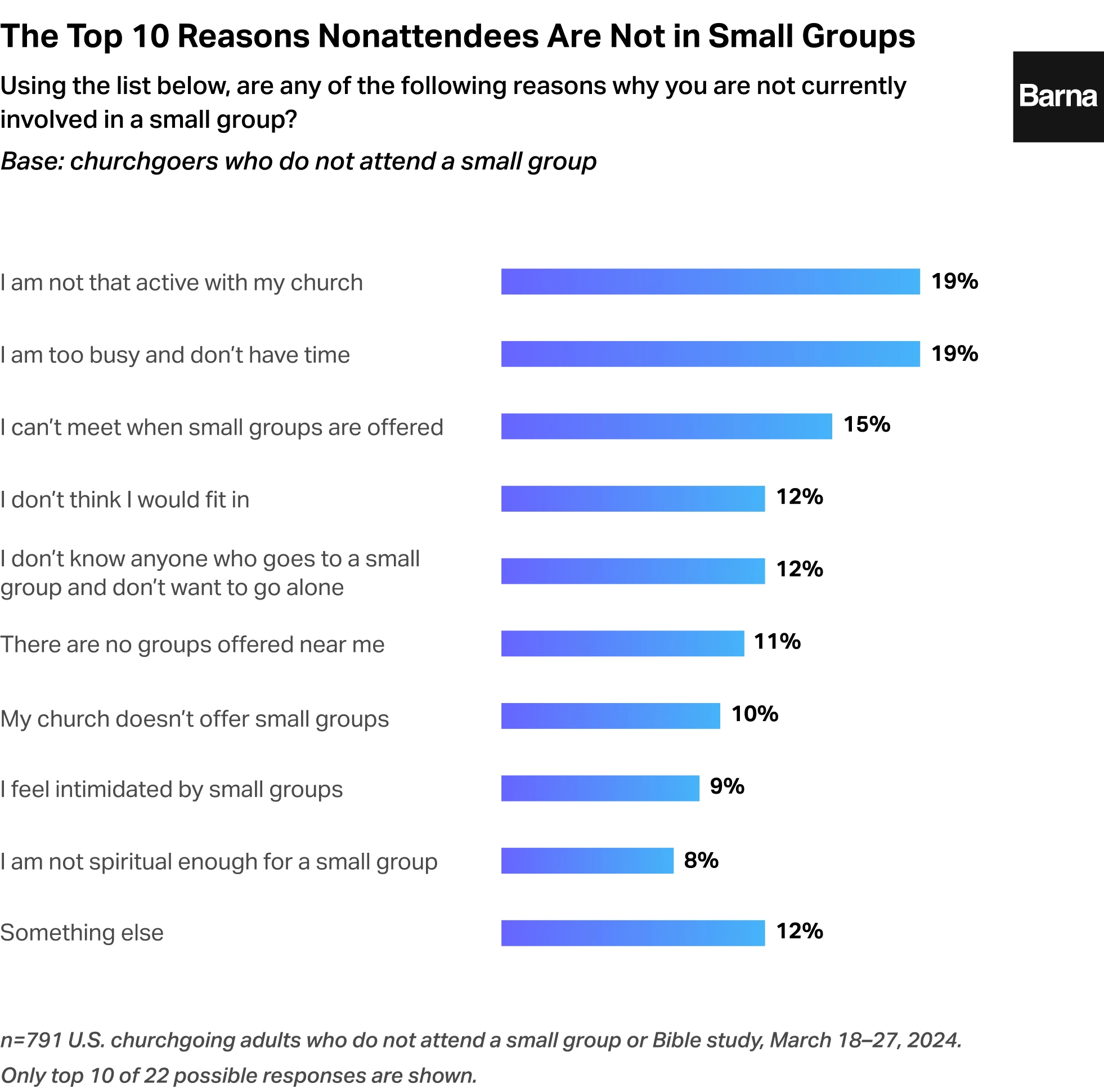
The following is an article from www.Barna.com, originally published on December 3, 2024.
This content is part of the State of the Church initiative, produced in partnership with Gloo.
Generally, there is warmth toward small groups even among churchgoers who are not engaged in them. So what’s holding back some churchgoers from acting on this interest?
Barna’s survey asked several questions of nonattendees to explore their hopes, hesitations and preferences when it comes to small groups. These churchgoers’ responses highlight some of the challenges that may hinder relationships and discipleship in today’s congregations. Here are some themes we see in the data that can help you to better understand potential barriers to small-group engagement:

These barriers represent a combination of practical and social problems. But when churches address these frictions, they do more than just make small-group attendance more likely; they contribute to relationships that, as Ed Stetzer puts it in Barna’s Discipleship in Community report, “shine a light of hope and become a powerful tool for the Kingdom.”
This release is part of Barna and Gloo’s ongoing State of the Church initiative. More Trends and stories related to the power of community can be found exclusively on Barna Access Plus.

The data reported on above comes from the various Barna studies listed below and published in Discipleship in Community:
An online survey of 4,063 U.S. Protestant churchgoing adults (ages 18 or older) was conducted March 18–27, 2024. Churchgoers are defined as adults who self-report attending church at least monthly. Barna surveyed adults from any Protestant denomination, mainline or non-mainline. The margin of error for the sample is +/- 1.4 percent at the 95 percent confidence interval. For this survey, researchers used an online panel for data collection and observed a quota random sampling methodology. Quotas were set for age, gender, region, race / ethnicity, education and income to achieve representation according to estimates calculated using U.S. Census Bureau data and Barna’s historical knowledge of churchgoers for comparison. Minimal statistical weighting has been applied to maximize sample representation.
An additional online survey of 418 U.S. Protestant senior pastors was conducted April 2–25, 2024. The margin of error for the sample is +/- 4.1 percent at the 95 percent confidence interval level. For this survey, researchers used an online panel for data collection and observed a quota random sampling methodology. Participants are all members of Barna Group’s proprietary Pastor Panel. Minimal weighting has been used to ensure the sample is representative based on denomination, region and church size.
© Barna Group, 2024